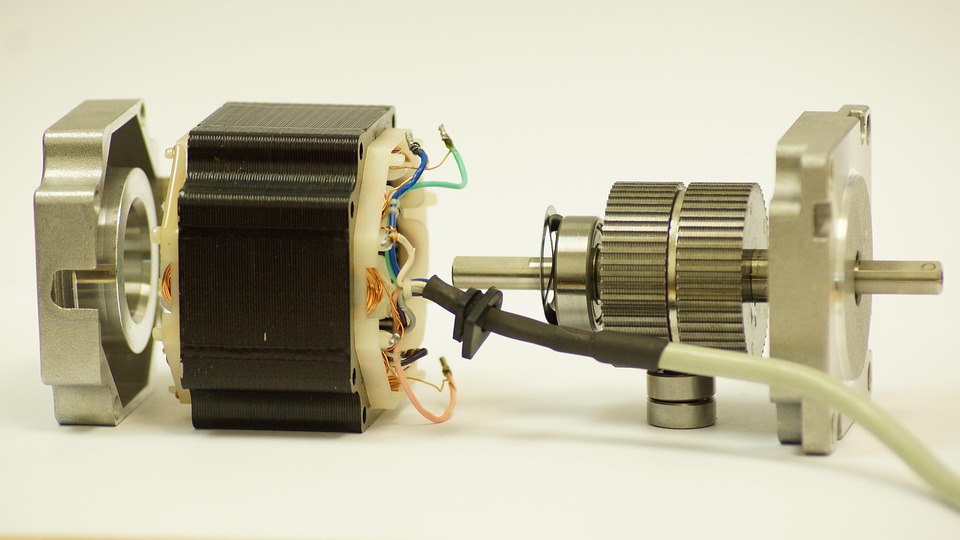In recent years, Chinese motor exports to Mexico have shown a marked upward trend. As the second-largest economy in Latin America, Mexico has seen sustained growth in demand for motors across its manufacturing, energy, and mining sectors.
According to industry data, China’s motor exports to Mexico in 2024 rose 18% year-on-year, with industrial motors—such as three-phase asynchronous motors and servo motors—accounting for 65%, and household motors—like air-conditioner compressor motors—making up 25%. This growth is driven by Mexico’s need to fill gaps in its domestic supply chain: amid global supply-chain realignments, Mexico is accelerating its shift to sourcing cost-effective, high-performance core industrial components from China.

Market Characteristics
- Strong technical adaptability: Mexico’s industrial voltage standard is primarily 460 V, yet various equipment must also accommodate 380 V, 220 V, and other levels; Chinese motor manufacturers need to flexibly adjust product parameters accordingly;
- policy dividends: Preferential treatment under China-Mexico bilateral trade agreements or other mechanisms allows certain motor products to enjoy tariff reductions, driving down export costs.
Basic Document Checklist
- 商業(yè)インボイス: Bilingual Chinese-English required; clearly specify the motor model, power rating, voltage (e.g., input 460 V / output 380 V), material (e.g., copper winding), and unit price;
- パッキングリスト: Specify the quantity per carton, net weight, gross weight, and packaging method (moisture-proof and shock-resistant standards);
- Certificate of Origin (CO): For tariff reduction or exemption, it must be issued by the China Council for the Promotion of International Trade;
- Technical Manual: Spanish version, including installation guide, electrical diagrams, and safety warnings.
Core Certification and Regulations
1. NOM Certification
Mexico mandatory safety certification: motors must comply with the following standards:
- NOM-001-SCFI: Electrical safety standards, covering insulation strength (e.g., 3000 V withstand voltage test), temperature rise limits (≤80 °C), etc.;
- NOM-020-SCFI: Energy efficiency requirements: industrial motors must meet IE3 or higher efficiency class;
- Electromagnetic Compatibility (EMC) Testing: Prevent the motor from interfering with other equipment during operation.
2. Testing and Application Process
- Testing is conducted by an accredited laboratory in Mexico (e.g., NYCE), with a cycle of approximately 6–8 weeks;
- The certificate holder must be a local Mexican enterprise; Chinese companies must apply through an authorized agent.
3. Special Requirements
- Voltage adaptation: The industrial power grid in Mexico operates at 60 Hz; motor designs must align with this local standard to prevent equipment failures caused by frequency incompatibility;
- Labeling and Packaging: The product must bear the NOM mark (including the certification number and expiration date), and the outer packaging must be labeled with moisture-proof and anti-tilt indicators.

Frequently Asked Questions and Solutions
1. Certification Barriers and Compliance Risks
Issue: The NOM certification process is complex; Chinese companies often face delays due to incomplete documentation or failed testing. For instance, one firm had its goods held up by Mexican customs for 15 days because it had not provided a Spanish-language technical manual.
Countermeasures:
- Work with the Mexican certification agent in advance to pre-review the technical documents;
- Select a third-party testing agency with NOM experience (e.g., Intertek) for pre-inspection.
2. Technical Standard Conflicts
Issue: There are differences between China’s national standard (GB) and Mexico’s NOM in terms of insulation class and energy-efficiency parameters. For example, Mexico requires motors to have an insulation class of H (180 °C), whereas domestic motors are mostly class F (155 °C).
Countermeasures:
- Custom-manufactured to NOM standards or designed with parameter-adjustment flexibility built in from the outset;
- Provide multi-voltage motor versions to meet the needs of different devices.
3. Logistics and Customs Clearance Risks
Issue: Ocean freight customs clearance is delayed due to document discrepancies (e.g., incorrect HS codes) or security inspections, causing demurrage charges to surge. Mexican customs inspects motor products at a rate as high as 20%.
Countermeasures:
- Commission a professional customs broker to verify the HS code;
- Adopt the "advance declaration" model to shorten customs clearance time.
4. Lack of Localization Services
Issue: After-sales maintenance is difficult; Mexican customers demand rapid response to failures (usually requiring resolution within 48 hours).
Countermeasures:
- Establish a bonded warehouse in Mexico to stock commonly used spare parts;
- Sign a cooperation agreement with local repair providers and provide technical training.

結(jié)論
As Mexico’s new-energy sectors—solar PV and electric vehicles—take off, high-efficiency energy-saving motors will become the next market growth engine, and early movers will seize the advantage. When exporting motors to Mexico, companies must focus on “technical adaptability + compliance” to enhance their products’ global competitiveness.
Finally, we wish you every success with your export! In addition, if you need agency services during the export process, please feel free to contact us.


 カスタマーサービスWeChatをフォローしてください
カスタマーサービスWeChatをフォローしてください